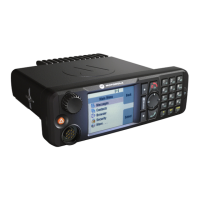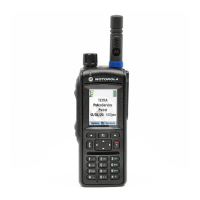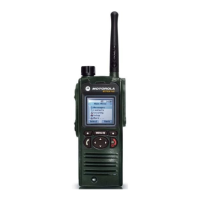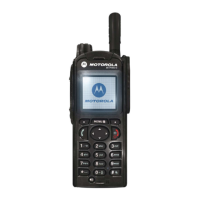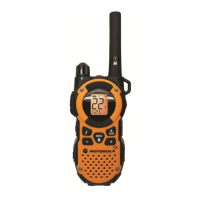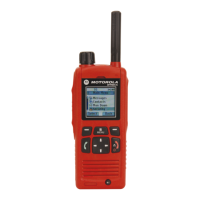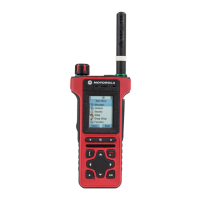Do you have a question about the Motorola MTM800 E and is the answer not in the manual?
Provides essential safety guidelines and warnings for radio usage.
Explains the meaning of graphic icons used throughout the document for clarity.
Identifies and describes the various buttons, keys, and indicators on the radio.
Outlines the procedure for turning the radio on and its initial startup routine.
Guides users on how to switch between Trunked Mode Operation and Direct Mode Operation.
Explains the methods for choosing and activating different talkgroups for communication.
Describes communication using infrastructure, enabling various voice and data services.
Explains simplex operation where radios communicate directly without infrastructure.
Explains how to establish one-on-one calls, ensuring conversation privacy.
Covers critical situation procedures, including emergency calls and alarms.
Provides instructions on how to activate the GPS feature for location tracking.
Guides users on how to check their current location and refresh the GPS data.
Describes how to send and receive text messages, including status and free text.
Explains how to manage the radio's contact list, including creating and editing entries.
Covers features related to radio security, such as PIN protection and keylock settings.
Details the configuration options for the rotary knob's mode, lock, and scroll behavior.
Facilitates switching between different radio operation modes and network selections.
Explains how to establish one-on-one calls, ensuring conversation privacy.
Details how to make calls to landline or mobile phones, and internal PABX extensions.
Enables access to the internet through a WAP-compliant browser on the radio.
Provides essential safety guidelines and warnings for radio usage.
Explains the meaning of graphic icons used throughout the document for clarity.
Identifies and describes the various buttons, keys, and indicators on the radio.
Outlines the procedure for turning the radio on and its initial startup routine.
Guides users on how to switch between Trunked Mode Operation and Direct Mode Operation.
Explains the methods for choosing and activating different talkgroups for communication.
Describes communication using infrastructure, enabling various voice and data services.
Explains simplex operation where radios communicate directly without infrastructure.
Explains how to establish one-on-one calls, ensuring conversation privacy.
Covers critical situation procedures, including emergency calls and alarms.
Provides instructions on how to activate the GPS feature for location tracking.
Guides users on how to check their current location and refresh the GPS data.
Describes how to send and receive text messages, including status and free text.
Explains how to manage the radio's contact list, including creating and editing entries.
Covers features related to radio security, such as PIN protection and keylock settings.
Details the configuration options for the rotary knob's mode, lock, and scroll behavior.
Facilitates switching between different radio operation modes and network selections.
Explains how to establish one-on-one calls, ensuring conversation privacy.
Details how to make calls to landline or mobile phones, and internal PABX extensions.
Enables access to the internet through a WAP-compliant browser on the radio.
| Channel Spacing | 25 kHz |
|---|---|
| Operating Temperature | -30°C to +60°C |
| IP Rating | IP54 |
| Frequency Range | 806-870 MHz |
| RF Power Output | 1W |
| GPS | Integrated GPS |
| Security | TEA1, TEA2 |
| TETRA Air Interface | ETSI EN 300 392-2 |
